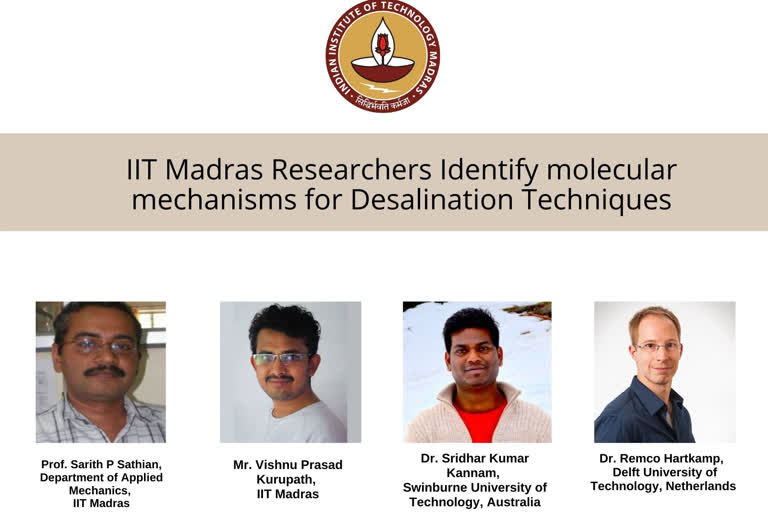Chennai: A team of researchers from the Indian Institute of Technology Madras have identified the possible molecular mechanisms in water flow through a new nano-pore geometry for desalination techniques to convert sea-water to drinking water. The results of the study, which involved Swinburne University of Technology, Australia, and the Netherlands-based Delft University of Technology, are extremely useful in the design of novel RO systems that utilise carbon nanotube-based membranes.
The research team took inspiration from nature, specifically biological systems for making efficient desalination membranes. The study was a sponsored project granted to IIT Madras by the Department of Science and Technology, Government of India, as a part of the Water Technology Initiative.
According to a report by NITI Aayog, 40 percent of Indian population will not have access to drinking water by the year 2030, and 21 major Indian cities, including Chennai and New Delhi, are at risk of running out of groundwater, which will impact around 100 million people. Scientific communities worldwide are looking out for ways to convert saline water in seas and oceans into freshwater for household and industrial use.
As India has a long coastline of around 7,000 km, desalinating the seawater has been considered a solution to solve the country’s water woes. Though various desalination technologies exist in the market today, the high energy expenditure by these technologies restricts their widespread use.
The Research was led at IIT Madras by Prof. Sarith P. Sathian, Department of Applied Mechanics, IIT Madras, whose research team has been working on nano-scale water transport through carbon nano tubes and graphene nano-pores for developing better desalination membranes. The team included Mr. Vishnu Prasad Kurupath from IIT Madras, Dr. Sridhar Kumar Kannam from Swinburne University of Technology, Australia, and Dr. Remco Hartkamp from Delft University of Technology, Netherlands. The findings of this study were published in the reputed peer-reviewed journal Desalination.
Elaborating on the need for such research, Prof. Sathian, Department of Applied Mechanics, IIT Madras, said, “Since the desalination process requires energy, which requires large amounts of fresh water, a cyclic dependency ensues between freshwater availability and energy availability, known as the water-energy nexus.”
Further, Prof. Sathian said, “In this context, advanced research on desalination has always aimed to reduce the energy consumption of the process. Mainly, two approaches were carried out. The first one involves investigating novel methods that can effectuate desalination at high energy efficiency. Secondly, continuous improvement of the state-of-the-art energy-efficient desalination techniques. Along with the latter idea, the highly efficient membrane-based desalination technique, reverse osmosis, has been extensively studied for improvements.”



